-
 2022. September VOL. 654
2022. September VOL. 654
Suncheon has a vast area of green zones with forests making up around 69% of the city area. You can see trees almost anywhere in the city, which keeps the air in good quality. Clean air means easy breathing. You need to breathe out long enough in order to take a deep breath in. This type of breathing can help cleanse your body of toxic substances. In this sense, Suncheon can be a great traveling destination in this era of the pandemic.
With lots of wetlands in and around the city, Suncheon is voted as one of the places that are good for humans and Earth. Water is filtered initially via wetlands, with the purified water flowing into lakes and streams that eventually lead to the ocean. This water also reaches humans. As I travel to places along the path of the clean water, I find myself becoming tender-hearted.
The first leg of the itinerary was Juamho Lake. The lake was created by blocking the water flow of Boseong River, the biggest branch of Seomjin River, and it is famous for having no pollutant that can make you frown. Set against Jogyesan Mountain(887m) and Mohusan Mountain(919m) with the right density of trees, the lake features a long riverside road at any point of which you can access forests with healthy vegetation. In spring and fall when temperatures fluctuate widely from day to night, white fog rises above the water, creating a dreamy scene.
If you start from Juamho Lake and move on to Seonamsa Temple past Dong-gu of Donggwangsa Temple, you will get to Sangsaho Lake at the entrance of the road. As a dam built to control the water level of Juamho Lake, Sangsaho Lake may look like another lake but is in fact connected to Juamho Lake by a water conveyance tunnel. Thus, Sangsaho Lake is actually part of Juamho Lake. Situated against a beautiful mountain, the lake is a great place where you can enjoy spacing out while staring at the water or the forest.
The wetland in Suncheon normally refers to Suncheon Bay. As a distinct ecosystem connecting inland and water, a wetland acts as Earth’s water filter. It is home to a wide range of plants and animals, serving as a natural dam that controls water levels by storing water during floods. If you are a fan of the unique landscape of wetlands as a borderline area, you are advised to visit Boknae-myeon, Boseong-gun at the upper region of Juamho Lake.
Artificial wetlands here are quite different from the natural wetlands in Suncheon Bay. Artificial wetlands at Juamho Lake in Banseok-ri and ecological wetlands at Juamho Lake in Yujeong-ri have both similarities and differences. They are both green buffer zones created to preserve the water quality of Juamho Lake as the water source.
Although artificial wetlands are closer to natural wetlands, ecological wetlands are purely man-made, experience-focused wetlands.
You can choose to walk on any of these two different types. If you stay long enough on any of these wetlands, you can easily hear frogs plunging into a pond and winds blowing as if combing the wetlands.
As the sun set, I headed for the Suncheonman Bay Wetland Reserve. Located between the Yeosu peninsula and the Goheung peninsula, Suncheon Bay is one of the world’s top five coastal wetlands. It is an ecological repository with the combination of 2,310,000㎡ of reed field and 26,450,000㎡ of mud flat creating a fascinating landscape. The Suncheon Bay area is the first coastal wetland registered on the List of Ramsar Wetlands and was also inscribed on the UNESCO World Natural Heritage list. The Suncheon Bay area presents magnificent scenes as all kinds of creatures living in the mud flat including fiddler crabs, Japanese ghost crabs, and mudskippers are crawling and a flock of hooded cranes fly up to the sky in winter.
‘Coexistence’ is the key word incorporated in every aspect of the Suncheon Bay area. The current landscape is a result of all the efforts made by people in the city to ensure that nature and people coexist by choosing preservation over development and protecting the wetlands. A close look quickly reveals how Suncheon Bay centers on the key word ‘coexistence.’ You will see ‘a wetland without utility poles’ in the reed field that is mild green and can easily guess the role of the scenic agriculture zone, looking from the Yongsan Observatory Tower.
If you have time, visit the ‘Land of Coexistence’ where all kinds of different creatures live together.
If you take the Ecological Tour Boat leaving from Dae-dae Port, you can watch the drama of a wetland from a different perspective.
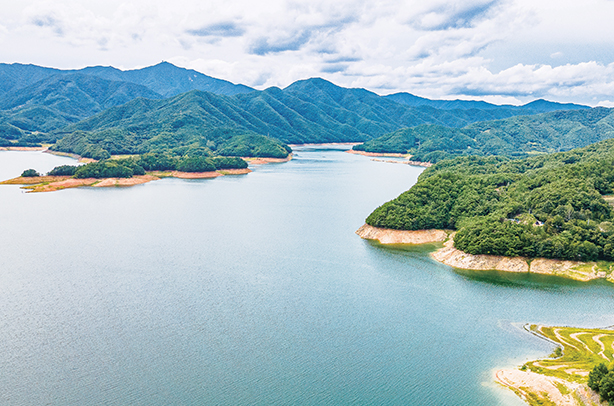

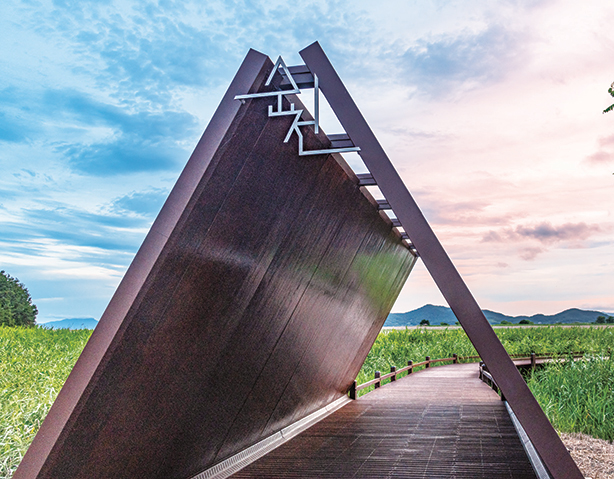
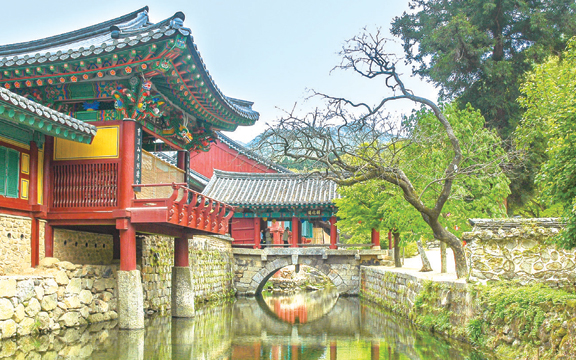
Songgwangsa is a large, majestic Buddhist temple. Yukdang Choi Nam-sun once said, ‘Songwangsa has the ambience of the big brother of all Buddhist temples.’ The temple is characterized by its free-style layout of buildings, which are laid out in all four directions instead of a straight line as is generally found at Buddhist temples. There are no stone pagodas, stone lanterns, and wind chimes at the temple, which is unusual. This is to follow the rules of feng shui or Chinese geomancy and to help Buddhist monks stay focused on their spiritual training. The temple, one of the three jewels of Seon Buddhism, has produced 16 national preceptors since the Goryeo dynasty. Recently, the movie ‘Decision to Leave’ was filmed at the temple.
![]() Address: 100 Songgwangsaan-gil Songgwang-myeon, Suncheon-si, Jeollanam-do
Address: 100 Songgwangsaan-gil Songgwang-myeon, Suncheon-si, Jeollanam-do
![]() Phone: 061-755-0107
Phone: 061-755-0107
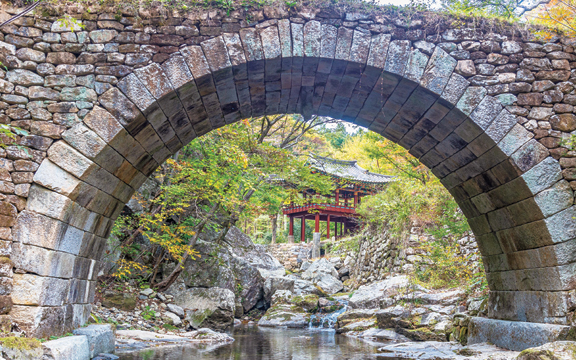
As the head temple of the Taego Order, Seonamsa Temple boasts of simplistic architectural beauty without many decorative elements. Listed as a UNESCO World Cultural Heritage site, the temple has little traces of repair and improvement. The temple is known for its many famous tourist attractions including Daeungjeon Hall or the main building of the temple, Seungsunggyo, and Haeuso. One of the lesser known attractions of the temple is Wontongjeon Hall. The hall has eaves that protrude considerably and buildings with doors decorated with peony patterns and animal sculptures on the ceiling, all of which are must-see items as well.
![]() Address: 450 Seonamsa-gil Seungju-eup, Suncheon-si, Jeollanam-do
Address: 450 Seonamsa-gil Seungju-eup, Suncheon-si, Jeollanam-do
![]() Phone: 061-754-5247
Phone: 061-754-5247
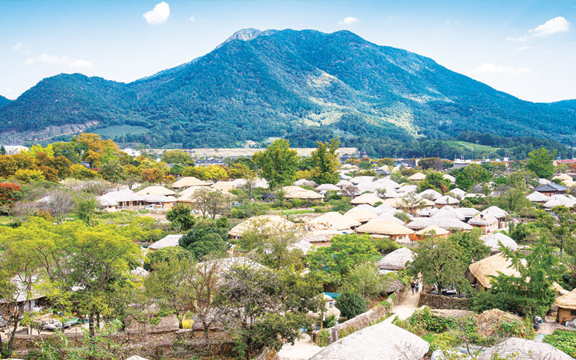
As one of the major town fortresses in Korea, the village is composed of old government offices including Donghun, Gaeksa, and Nae-a. It is the perfect place where you can travel back in time as you walk along the old alleys across the village packed with round-shaped, thatched-roof houses. It is fun to walk on the 1.4km-long fortress encircling the village. The stairs between the south and west gates are the best observation spot where you can get a bird’s-eye view of the entire village. If you plan to stay overnight in Suncheon, you can book a room at one of the thatched-roof houses in the folk village where you can sit on the wooden porch and watch the stars at night.
![]() Address: 30 Chungmin-gil Nagan-myeon, Suncheon-si, Jeollanam-do
Address: 30 Chungmin-gil Nagan-myeon, Suncheon-si, Jeollanam-do
![]() Phone: 061-749-8831
Phone: 061-749-8831
